
A pilgrimage is a journey, often into an unknown or foreign place, where a person goes in search of new or expanded meaning about their self, others, nature, or a higher good through the experience. It can lead to a personal transformation, after which the pilgrim returns to their daily life.

A pilgrim is a traveler who is on a journey to a holy place. Typically, this is a physical journey to some place of special significance to the adherent of a particular religious belief system. In the spiritual literature of Christianity, the concept of pilgrim and pilgrimage may refer to the experience of life in the world or to the inner path of the spiritual aspirant from a state of wretchedness to a state of beatitude.
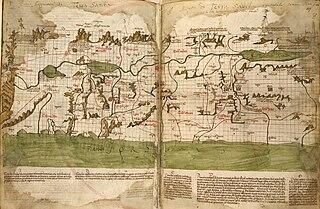
The Holy Land is an area roughly located between the Mediterranean Sea and the eastern bank of the Jordan River, traditionally synonymous both with the biblical Land of Israel and with the region of Palestine. Today, the term "Holy Land" usually refers to a territory roughly corresponding to the modern states of Israel and Palestine. Jews, Christians, Muslims, and Baháʼís regard it as holy.

Tourism in Russia plummeted in 2022. Only 200,100 foreigners visited Russia in 2022, a drop of 96.1% from pre-pandemic/pre-2022 Russian invasion of Ukraine years. Earlier, Russia had seen rapid growth since the late Soviet times, first domestic tourism and then international tourism as well. Russia had formerly been among the most popular tourist destinations in the world, though it fell off that list in 2022. Not including Crimea, the country contains 23 UNESCO World Heritage Sites, while more are on UNESCO's tentative lists.
Many Wikipedia articles on religious topics are not yet listed on this page. If you cannot find the topic you are interested in on this page, it still may already exist; you can try to find it using the "Search" box. If you find that it exists, you can edit this page to add a link to it.

A shrine is a sacred or holy space dedicated to a specific deity, ancestor, hero, martyr, saint, daemon, or similar figure of respect, wherein they are venerated or worshipped. Shrines often contain idols, relics, or other such objects associated with the figure being venerated. A shrine at which votive offerings are made is called an altar.

Cultural heritage tourism is a form of non-business travel whereby tourists engage with the heritage, tangible and intangible, moveable and immovable, of a region through activities, experiences, and purchases which facilitate a connection to the people, objects, and places of the past associated with the locations being visited. As opposed to natural heritage tourism, which focuses on visitors' interaction with the unimproved environment of the area being visited, including outdoor sports and recreation, hiking, diving, fishing, and naturalism, and pleasure tourism without any heritage interest, such as indoor recreation, gastronomy, and hospitality without any significant precedent in the history and heritage of the region, cultural heritage tourism can include activities such as tours of immovable cultural sites, such as historic house museums, historic fortifications, human history museums, and library documentary heritage collections, opportunities for purchases of moveable cultural property, such as antiques, antiquarian books, and other works and ephemera associated with the locations being visited, and opportunities for admission to or purchase of intangible heritage experiences associated with the tourism region, including gastronomic heritage and admissions to performances such as theatre, opera, ballet, indigenous dances, and storytelling.
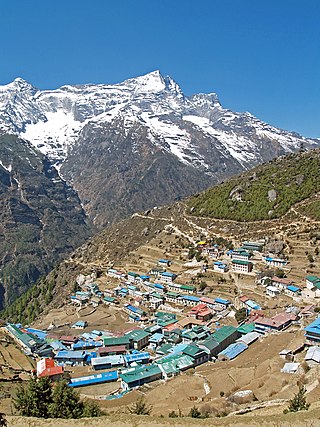
Tourism is the largest industry in Nepal and its largest source of foreign exchange and revenue. Possessing eight of the ten highest mountains in the world, Nepal is a hot spot destination for mountaineers, rock climbers and people seeking adventure. The Hindu and Buddhist heritage of Nepal and its cool weather are also strong attractions.

Ian Campbell Bradley is a British academic, author and broadcaster.
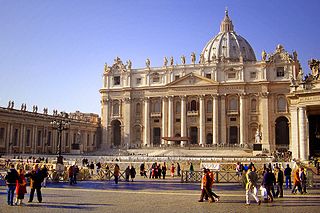
Christian tourism is a subcategory of religious tourism which is geared towards Christians. As one of the largest branches of religious tourism, it is estimated that seven percent of the world's Christians—about 168 million people—are "on the move as pilgrims" each year.
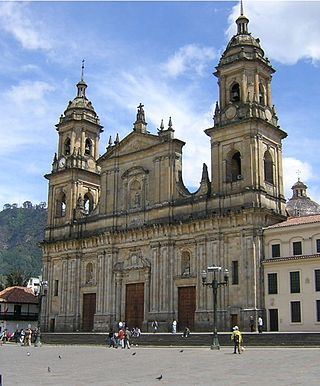
Religion in Colombia is dominated by various branches of Christianity and is an expression of the different influences in the Colombian culture including the Spanish, the Native Amerindian and the Afro-Colombian, among others.

Christianity has a strong tradition of pilgrimages, both to sites relevant to the New Testament narrative and to sites associated with later saints or miracles.

Yātrā, in Indian-origin religions, Hinduism, Buddhism, Jainism and Sikhism, generally means a pilgrimage to holy places such as confluences of sacred rivers, sacred mountains, places associated with Hindu epics such as the Mahabharata and Ramayana, and other sacred pilgrimage sites. Visiting a sacred place is believed by the pilgrim to purify the self and bring one closer to the divine. The journey itself is as important as the destination, and the hardships of travel serve as an act of devotion in themselves.

Traditional religions such as the Akan Traditional Religion and Dagbon Traditional Religion are the indigenous religions of Ghana. Islam was the first Abrahamic religion to be introduced in the country between the tenth and 15th centuries, by muslim traders. Later, Christianity was introduced during slavery and colonisation. Today, Christianity is the largest religion in Ghana, with substantial adherents of Islam and traditional faiths. Christianity is mainly in the country's south while Islam is based in the north. Islam gained widespread acceptance in northern Ghana after Yaa Naa Zanjina accepted the faith in the 17th century.
Religion and business have throughout history interacted in ways that relate to and affected one another, as well as influenced sociocultural evolution, political geographies, and labour laws. As businesses expand globally they seek new markets which leads to expanding their corporation's norms and rules to encompass the new locations norms which most often involve religious rules and terms.
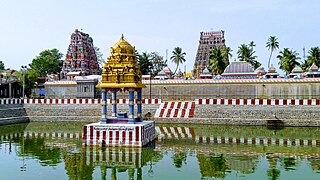
Theertham literally refers to water. In Hindu sacred literature, it is referred to as the physical holy water body associated with a temple or deity. As per Hindu religious belief, water is the principal purification mechanism. While external purification is believed to be through a dip in sacred water bodies, internal purification is through truthfulness. Most Hindu temples are associated with bodies of water, which are called Theertham. In Vishnu temples, devotees are offered a few drops of sacred water called Theertham.
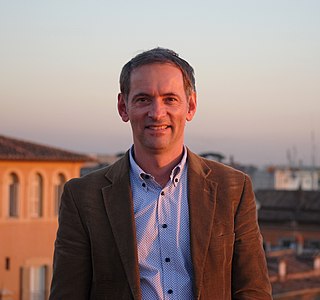
Ralf van Bühren is a German art historian, architectural historian, church historian, and theologian. He is professor of art history at the School of Church Communications at the Pontifical University of Santa Croce in Rome, and also lecturing at the Pontificia Università Gregoriana. His courses on Sacred Art and Architecture in Rome are open to students of US universities with campus in Rome.
Religious tourism in India is a focus of Narendra Modi's national tourism policy. Uttarakhand has been popular as a religious and adventure tourism hub.
The Cejna Cemayê is a Yazidi festival that takes place annually from 6 October to 13 October, in honor of the Sheikh Adi. It is an important time for cohesion and includes an annual pilgrimage to the tomb of Sheikh Adi in Lalish, along with many important ceremonies throughout the festive days.


















